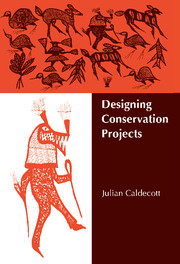Book contents
- Frontmatter
- Contents
- Foreword by Daniel H. Janzen
- Preface
- Acknowledgements
- 1 Introduction
- 2 Baram River, Sarawak
- 3 Cross River, Nigeria
- 4 Siberut and Flores Islands, Indonesia
- 5 Forest fragments in China and the Philippines
- 6 Costa Rican linkage projects
- 7 Irian Jaya, Indonesian New Guinea
- 8 Project themes and practicalities
- 9 Options for conservation
- 10 Options for development
- 11 Options for changing people's minds
- 12 Summary and conclusions
- Glossary
- Bibliography
- Index
1 - Introduction
Published online by Cambridge University Press: 04 February 2010
- Frontmatter
- Contents
- Foreword by Daniel H. Janzen
- Preface
- Acknowledgements
- 1 Introduction
- 2 Baram River, Sarawak
- 3 Cross River, Nigeria
- 4 Siberut and Flores Islands, Indonesia
- 5 Forest fragments in China and the Philippines
- 6 Costa Rican linkage projects
- 7 Irian Jaya, Indonesian New Guinea
- 8 Project themes and practicalities
- 9 Options for conservation
- 10 Options for development
- 11 Options for changing people's minds
- 12 Summary and conclusions
- Glossary
- Bibliography
- Index
Summary
Thousands of the wild species which were alive in the 1950s and 1960s no longer exist. We cannot bring them back, but we can learn from their deaths. While debate continues on how to make human development more sustainable, an immediate task is to protect the diversity that remains against known hazards. These hazards are potent, and ideas on how to resist them are still evolving. There is an urgent need for measures which are practical and effective, and which can be duplicated within existing political, administrative, and economic systems. This book advises on the design of conservation projects which meet these criteria, yet are more complete, more inclusive and more durable than those designed in the recent past.
The book is mainly about conserving wild species, and the life styles and cultures which depend upon them. Most of these species occur in the tropics, and cannot survive outside the natural ecosystems to which they are adapted. Very few can be kept alive for long or at reasonable cost in captivity or in artificial habitats. The book therefore emphasizes conserving natural ecosystems in the tropics, especially those that occur in areas where it seems feasible to protect them. These areas are called nature reserves, and are defined as places containing viable samples of natural ecosystems which are, or might be, or should be, set aside by law or custom mainly for conservation. A conservation project, then, is a planned undertaking which aims to protect a nature reserve.
Nature reserves would not exist and would not be necessary if the shortterm needs of people did not conflict with those of wild species and natural ecosystems.
- Type
- Chapter
- Information
- Designing Conservation Projects , pp. 1 - 3Publisher: Cambridge University PressPrint publication year: 1996



